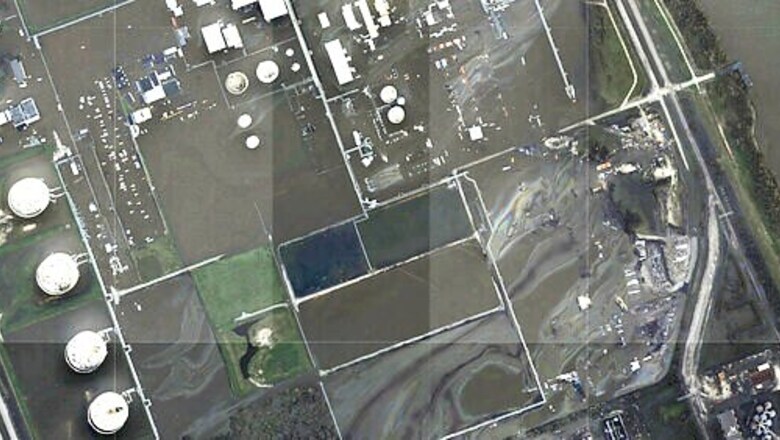
views
WASHINGTON: Louisiana wildlife officials say they have documented more than 100 oil-soaked birds after crude oil spilled from a refinery flooded during Hurricane Ida.
The Louisiana Department of Wildlife and Fisheries said Thursday that a growing number of oiled birds had been observed within heavy pockets of oil throughout the Phillips 66 Alliance Refinery in Belle Chasse, Louisiana, as well as nearby flooded fields and retention ponds along the Mississippi River.
Jon Wiebe, a biologist running the state restoration program, said 10 oiled birds have been captured and transported to a rehabilitation location for cleaning. Five additional dead birds were recovered and bagged as evidence, he said.
Wiebe said efforts to capture and save more birds are ongoing. The affected species include black-bellied whistling ducks, blue-winged teal and a variety of egrets. Other animals were also seen covered in oil, include alligators, nutria and river otters.
A summary issued Thursday by the Environmental Protection Agency said it had received 43 notifications of significant inland oil spills and chemical releases after Ida. The agency’s compliance arm has issued 10 requests to facility operators seeking information to determine whether federal environmental laws were violated during the storm, potentially triggering penalties and fines.
The Associated Press first reported the spill at the Alliance Refinery on Sept. 1 after reviewing aerial images captured by a National Oceanic and Atmospheric Administration aircraft. In the days after the Category 4 hurricane made landfall Aug. 29, Phillips 66 repeatedly sought to downplay reports of damage at the company’s sprawling refinery.
Asked about reports of levee failures near the refinery the day after Ida hit, Phillips 66 spokesman Bernardo Fallas told AP there was some water in the facility and stressed that operations were shut down in advance of the storm.
Asked two days after the storm about potential environmental hazards emanating from the facility, Fallas referred a reporter to a statement on the companys website saying its response is focused on ensuring the safety and well-being of our employees and our surrounding communities.
On Day Three, after the AP sent Phillips 66 aerial photos showing extensive flooding at the refinery and what appeared to be petroleum in the water, Fallas conceded the company could had discovered a sheen of unknown origin in some flooded areas” of the refinery and that all pollution had been secured and contained within refinery grounds at that time.
A Louisiana Department of Environmental Quality assessment team sent to the refinery last week reported a sizable spill of heavy crude oil at the site was being addressed with booms and absorbent pads. A levee meant to protect the plant had breached, allowing floodwaters to flow in during the storm and then back out as the surge receded.
No estimate for how much oil might have spilled from the refinery has yet been made public. When fully operational, the Alliance Refinery can process more than 255,000 barrels of crude oil per day into gasoline and other petroleum products.
Phillips 66 did not immediately respond Thursday to an email seeking comment about the oil-soaked birds and wildlife. The company listed the aging refinery for sale last month, before the storm hit, citing poor market conditions.
___
Follow AP Investigative Reporter Michael Biesecker at http://twitter.com/mbieseck
___
Contact APs global investigative team at [email protected].
Disclaimer: This post has been auto-published from an agency feed without any modifications to the text and has not been reviewed by an editor
Read all the Latest News, Breaking News and Assembly Elections Live Updates here.




















Comments
0 comment